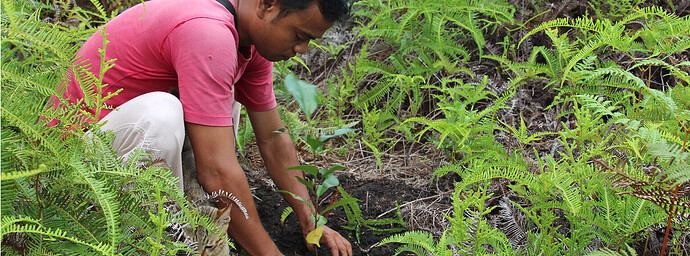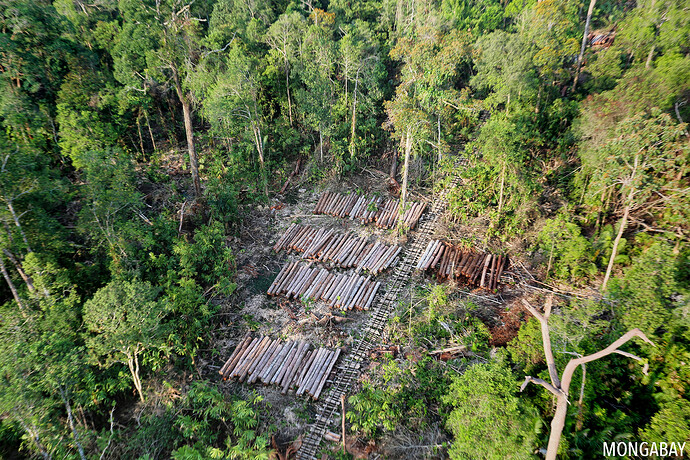- Scientists have found that focusing on restoring degraded forests, which cover more than 1.5 billion hectares (3.7 billion acres) globally, can enhance forest carbon stocks more efficiently than replanting in deforested areas, with natural regrowth being a cost-effective method.
- In Central America’s “Five Great Forests,” there’s a goal to restore 500,000 hectares (1.2 million acres) by 2030. The study identified 9.8 million hectares (24.2 billion acres) as top restoration priorities, with 91% being degraded forests.
- Restoring just 5% of these priority zones was calculated to potentially sequester 113 million tons of CO2, equivalent to taking more than 20 million cars off the road for a year.
- The research emphasizes the importance of involving local communities in restoration planning and suggests that current forest management practices, like those in the timber industry, need to adapt for more sustainable outcomes.
A new global analysis focuses on the climate benefits of restoring degraded forest areas instead of replanting trees in deforested areas.
Researchers mapped forests worldwide to find areas that could support more trees and wildlife if restored. The study reveals that degraded forests, which retain 50-80% of their potential tree density, cover more than 1.5 billion hectares (3.7 billion acres) worldwide. Focusing restoration efforts in these damaged forest ecosystems may deliver rapid gains for carbon storage and wildlife habitat connectivity.
Degraded forests are those with reduced canopy cover, biodiversity loss, soil erosion, altered water cycles, heightened susceptibility to pests and diseases and diminished overall health and functionality. Causes range from unsustainable logging and shifting cultivation to wildfires, overgrazing and climate change impacts.
Forest restoration potential by intervention type. Areas with reforestation potential are mapped together with areas of degraded forest with potential for recovery. Figure from Rayden et al 2023.
Degraded forests are cheaper and easier to restore than completely cleared lands, the authors say, and allowing them to regrow naturally (via natural or assisted natural regeneration) can rapidly recapture lost carbon. The authors argue that considering degraded forests significantly expands the area that could be targeted by restoration programs and would better reflect the full range of opportunities to pull carbon from the air into the plant biomass and soil of the forest.
The study combined remote sensing data on current tree cover with models of forest biomass potential. This allowed the researchers to map degraded forests globally that are below their ecological integrity and natural carbon stocking levels. They estimate more than 3.4 billion hectares (8.4 billion acres) of land could support more tree cover, including 1.54 billion hectares of partly degraded forest.
Restoring just 5% of these priority zones could sequester 113 million tons of CO2. This is roughly equivalent to taking more than 20 million cars off the road for a year.
The study prioritized areas near intact, high-integrity forests with “minimal human influence, where there is a greater chance that forest restoration will deliver lasting benefits. Restoring degraded areas around intact forests helps connect habitats. This lets species move and adapt as the climate changes. It also creates larger, healthier ecosystems.
The researchers demonstrated their approach in Central America’s “Five Great Forests.” These areas include Selva Maya in Mexico, Guatemala and Belize; La Moskitia in Nicaragua and Honduras; Indio Maíz-Tortuguero in Nicaragua and Costa Rica; La Amistad in Costa Rica and Panama; and El Darién in Panama and Colombia. In these places, governments, organizations and Indigenous groups aim to restore 500,000 hectares (1.2 million acres) of forest by 2030. The analyses identified 9.8 million hectares (24.2 billion acres) as a very high restoration priority. Of this, 91% was degraded forests.
Examples of indicative of areas with potential for each of 3 forest restoration approaches in the 5 great forest landscapes of Mesoamerica. Figure from Rayden et al 2023.
The authors stress that global mapping does not prescribe exact locations for restoration since local constraints like land ownership and tenure must be considered. Restoration must always be planned with and tailored to the needs of local communities and Indigenous groups.
The research, published in Conservation Biology, was led by scientists from the Wildlife Conservation Society (WCS). It builds on prior studies that have calculated the potential for global reforestation and afforestation but often concentrated only on tree planting in deforested areas.
“Mapping degraded forest areas means coming to restoration decisions with better information,” says Kendall Jones, WCS conservation planning specialist and co-author for the paper.
The research comes as more than 140 world leaders have endorsed the Glasgow Leaders’ Declaration on Forests and Land Use, committing to halt deforestation and restore forests worldwide this decade. The new study provides an important blueprint to expand thinking on where and how to achieve these pledges most efficiently. It also highlights needed policy shifts.
Timber extraction in Sumatra. Photo credit: Rhett A. Butler
Some of these shifts may need to happen in the timber industry. “In managed forest concessions, lengthening of rotations and increasing conservation set asides could allow for greater forest recovery even while timber harvest continues,” the authors state.
With countries set to update their climate action plans under the Paris Agreement in 2025, the authors say now is the time to incorporate degraded forests into strategic restoration planning.
About 878 million hectares (2.2 billion acres) of land have less than a quarter of the biomass they could have, meaning these places may need help growing back, protection from people or both, the study says. When analyzed by continent, Africa and Asia have the largest restoration potential, with around 800 million hectares (1.9 billion acres) each, about a quarter of the world’s total.
Restoration has tremendous potential as a nature-based solution. Still, programs must be designed to deliver carbon, biodiversity and socioeconomic goals through transparent processes respecting local rights and tenure.
Banner image of the Pesalat Reforestation Project in Central Kalimantan, Indonesia, where thousands of seedlings have been planted to restore forests lost due to fire and logging. Image by World Resources Institute via Flickr (CC BY-NC-SA 2.0).
Liz Kimbrough is a staff writer for Mongabay and holds a Ph.D. in Ecology and Evolutionary Biology from Tulane University, where she studied the microbiomes of trees. View more of her reporting here.
Citation:
Rayden, T., Jones, K. R., Austin, K., & Radachowsky, J. (2023). Improving climate and biodiversity outcomes through restoration of forest integrity. Conservation Biology, e14163. DOI: 10.1111/cobi.14163



